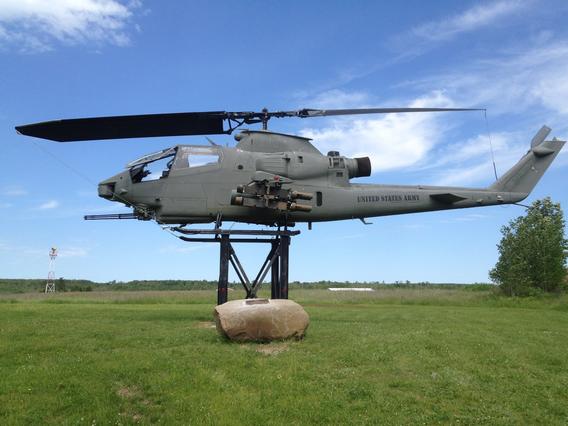
The first thing you may notice at the Moose Lake–Carlton County Airport is the 1967 Cobra helicopter on display near the entrance. A past Carlton County commissioner worked to obtain the army surplus donation, then helped raise the money to have it moved to the airport.
The public airport is three miles from the town of Moose Lake in northwestern Minnesota. Airport manager Quentin Anderson, who has been in that position for 22 years, divides his time between the Moose Lake airport and Carlton County’s other airport at Cloquet 30 miles away—a job that has him sometimes wishing he could be in two places at once. Fortunately, the Moose Lake airport also employs a part-time maintenance worker to help with the day-to-day maintenance.
According to Anderson, the airport’s primary operations are for tourism and recreational flying, with some additional operations in business, medical, and government use. The airport averages 94 operations a week with 18 based aircraft; 51 percent are transient and 49 percent are local general aviation.
Moose Lake Airport was established as a turf strip in 1951; it was lighted in 1972 and paved in 1992. The airport is home to a six-unit t-hangar purchased from the South St. Paul Airport-Holman Field. It was disassembled for the move, then reassembled at Moose Lake in 2001. A relatively new arrival and departure building was constructed in 2012.
In 2013, the airport completed major reconstruction of the main runway and taxiway—a project that received a Merit Award for Outstanding Performance from MnDOT. The airport installed LED runway lighting in 2015, which has proven more efficient than the previous halogen lighting and has worked satisfactorily, Anderson says. “I do have some concerns with how the fixtures are sealed from moisture. We did have one leak and burned out the circuit board. Time will tell if this becomes a larger problem.”
Over the last few years, Anderson says the airport’s focus has been crack seal coating pavement maintenance and security camera system installation. Since its facilities and pavements are fairly new, the airport’s next priority will be constructing new hangars—something much needed, as the airport currently maintains a waiting list for space.
Anderson counts as a success the fact that the airport is operationally self-sufficient. “County levy dollars are only needed for capital improvement projects,” he says.
Staying up to date on airport, environmental, and other regulations as well as various inspections, is probably the toughest part of his job, Anderson says. And because this is Minnesota, weather can also be difficult. “Weather was a challenge this winter,” Anderson says. “We had several snowstorms back to back.”

